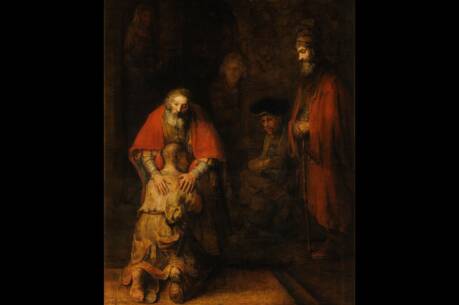How can you be a sign of Christ for others?
On its own, the Ascension is difficult to understand. Only Luke speaks of it, although all the New Testament writers agree that Jesus ceased appearing at some point. The only comparable biblical ascensions are those of Elijah and Enoch. About the latter, Scripture gives no details (Gen 5:24). Elijah, meanwhile, ascends to heaven in a fiery chariot and whirlwind (2 Kgs 2:10-11). In both cases God is at work, rewarding someone for his service. This is less clear in Jesus’ case. Luke mentions that Jesus was “lifted up,” hinting that someone other than Jesus was at work, but Luke does not mention God’s involvement. He gives the impression that Jesus was in charge throughout.
‘Go into the whole world and proclaim the Gospel to every creature.’ (Mk 16:15)
How do you seek signs of Christ at work?
How can you be a sign for others?
In its larger context, however, the Ascension makes more sense. Just before the Babylonian exile (586 B.C.E.), the divine presence that had resided in the Jerusalem Temple left the Temple and ascended over the Mount of Olives, east of Jerusalem (Ezek 11:23). Although this was a punishment for the priests who had introduced foreign worship into the temple, it was a blessing to the Jews who had been scattered by war. God now resided high over Jerusalem, and they could direct their prayers in that direction from any point on earth, confident that they would be heard (Dan 6:10). In portraying Jesus’ own ascent, Luke implies that Jesus is divine and that he was going up to join that divine presence over Jerusalem. From the Father’s right hand, he would guide the church throughout the world.
The ending of Mark’s Gospel, which the church reads this Sunday, gives several signs of Christ’s continuing presence in the Christian community. Christians will drive out demons in Christ’s name, they will speak new languages, dangerous things will not hurt them, and they will heal the sick. The textual history of the ending of Mark’s Gospel is complicated. Ancient manuscripts attest to multiple variants, so it is difficult to express with confidence what Mark had in mind with these signs. Nonetheless, the canonical ending that we read this Sunday provides a fitting end to Jesus’ “rescue mission.” The disciples are now the rescuers, going out into the world with Christ’s power behind them, to deliver humanity from death.
In this Sunday’s second reading, Paul provides other signs that Christ is at work. The Christian community was Christ’s body on earth, and from heaven Christ continued to equip it with the charisms necessary for its health. When someone showed the ability to be an apostle, prophet, evangelist, pastor or teacher, that person gave evidence that Christ remained at work in the Christian community. Those who received the grace to build up the body of Christ in any way became a sign that Christ was still active.
This remains the case today. Jesus still stands at the Father’s right hand, guiding the Christian community and empowering it with the Spirit. Although the signs are different from those that accompanied early Christians, evidence remains that the divine Christ continues to act through his human disciples. In a violent world, Christians preach peace. Among those who hate, Christians act in love. In the face of greed, Christians give from their poverty. Among the proud, Christians remain humble. These are signs of the risen Christ still at work.
This article also appeared in print, under the headline “Still at Work,” in the April 30, 2018, issue.








